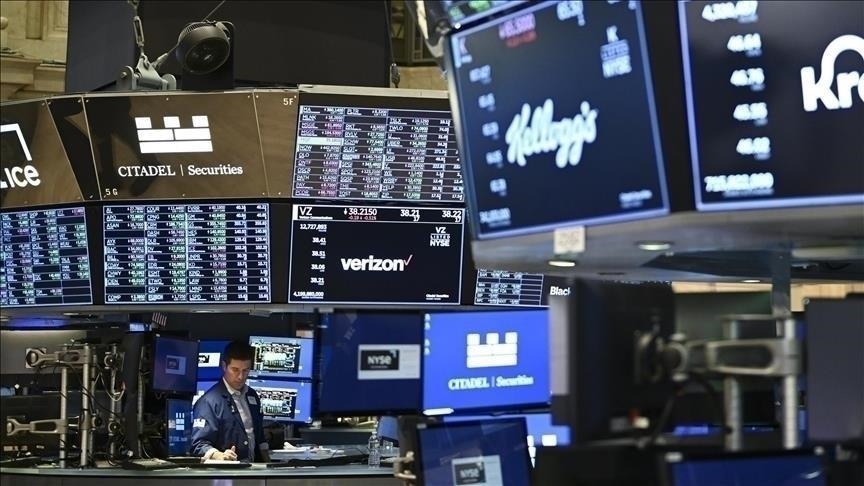NEW YORK
US President Donald Trump’s sweeping reciprocal tariffs, unveiled Wednesday, are fueling recession concerns and inflationary pressure, limiting the Federal Reserve’s ability to cut interest rates, analysts told Anadolu.
The tariffs, announced Wednesday, target over 180 countries, with the highest rates imposed on major trade partners.
The EU was hit with 20%, China 34%, Vietnam 46%, Taiwan 32%, Japan 24%, and India 26%. Türkiye, the UK, Brazil, Australia, the United Arab Emirates, New Zealand, Egypt, and Saudi Arabia each faced 10%.
Markets reacted sharply. The S&P 500 and Nasdaq posted their worst daily losses since 2020, shedding about $3 trillion in value amid growing fears of a global trade war.
Fed faces uncertainty
Padhraic Garvey, ING’s regional head of research for the Americas, said US Treasury yields are likely to fall further in the coming days.
“The Fed will be in a quandary. It will want to support the economy with rate cuts, but uncertainty over how long inflation may persist is likely to lead them to hesitate,” he said.
Garvey said ING projects rate cuts in September and December, and another in March 2026, though a darker short-term economic outlook could force the Fed to act sooner.
He pointed out that while US firms could turn to domestic alternatives, full substitution is unrealistic. The US imported $3.3 trillion worth of goods last year, while its manufacturing output added just under $3 trillion in value.
“To eliminate reliance on imports, the US manufacturing sector would need to more than double in size,” he said. “That scale of reshoring is not possible overnight, so price hikes across the supply chain are inevitable.”
Garvey added that while tariff revenue will provide Trump with fiscal space for tax cuts, those revenues are expected to decline over time.
“The hope is that this will be more than offset by higher payroll and corporation tax receipts,” he said.
Tariffs complicate Fed decisions
Olu Sonola, US head of economic research at Fitch Ratings, said the tariffs will likely slow growth and raise inflation.
He pointed to falling consumer confidence and market losses, warning that spending could weaken further in March after similar declines in January and February.
“These tariffs will certainly make the Fed’s job more challenging,” he said. “The Fed will likely be on the sidelines for a few months, unless the economic weakness setting-in severely weakens the labor market.”
“If the unemployment rate moves beyond 4.5% over a short period of time, the Fed will likely be forced to cut rates sooner than they want to,” he said.
Sonola said short-term benefits from the tariffs are unclear.
“If the market turmoil persists and we don’t see concessions and compromises between the US government and its trading partners, the short term pain will likely overwhelm any potential long term gain,” he said.

